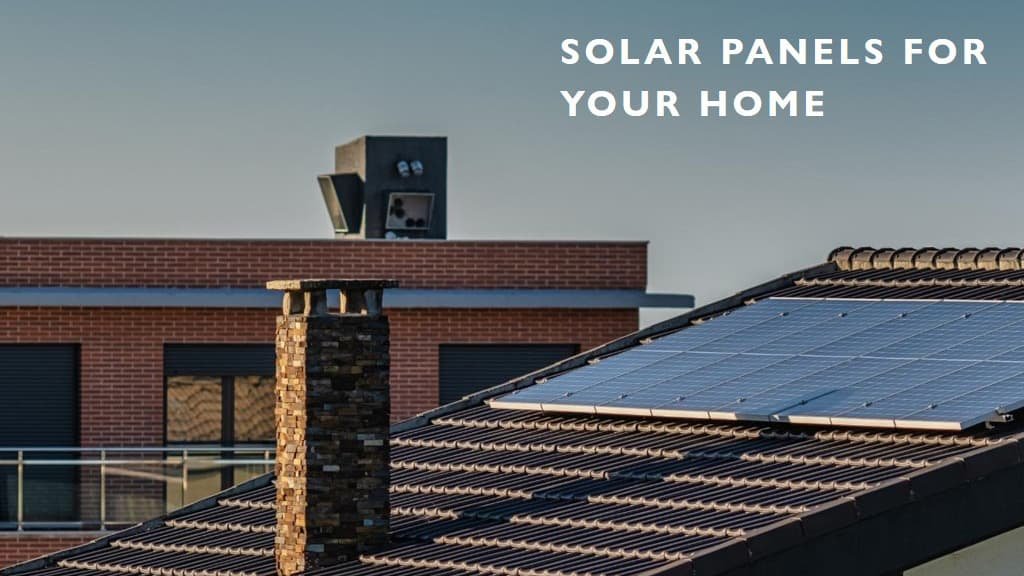When it comes to choosing the right solar panels for your home, you’ll likely encounter two main types: monocrystalline and polycrystalline. Both have their unique benefits and applications, so understanding their differences can help you make the best choice for your energy needs and home conditions. Here’s a comprehensive comparison to guide you in selecting the ideal solar panels for your home.

Monocrystalline Solar Panels
Composition and Manufacturing
Monocrystalline panels are made from a single, continuous crystal structure of high-purity silicon. The manufacturing process involves forming silicon into bars, which are then sliced into thin wafers. This method is more complex and costly but results in panels with higher efficiency and durability.
Efficiency and Performance
Monocrystalline panels typically offer efficiency rates above 20%, making them more efficient at converting sunlight into electricity compared to polycrystalline panels. This is due to their uniform crystal structure, which allows for better electron flow. They also perform better in low-light conditions, which can be crucial if you live in an area with frequent cloud cover or less direct sunlight.
Best Use Case
Monocrystalline panels are ideal if you have limited roof space or require maximum efficiency. They are particularly suited for urban homes with smaller rooftops where every square meter of space counts. Their sleek, uniform appearance also adds to their appeal in residential settings.
Polycrystalline Solar Panels
Composition and Manufacturing
Polycrystalline panels are made from silicon crystals that are melted together. The silicon is poured into molds, cooled to form large blocks, and then sliced into wafers. This simpler manufacturing process reduces production costs and makes polycrystalline panels more affordable.
Efficiency and Performance
Polycrystalline panels have slightly lower efficiency rates, typically ranging from 15-17%, compared to their monocrystalline counterparts. This is due to the presence of multiple crystal structures in each cell, which can lead to less efficient electron flow. However, they still provide a reliable and effective source of solar energy.
Best Use Case
Polycrystalline panels are a good choice if budget constraints are a primary consideration and you have ample roof space. They are suitable for larger rooftops in rural or suburban areas where space is less of an issue. Their lower cost and simpler manufacturing process offer a more affordable entry point into solar energy.
Choosing the Right Panel for Your Home
1. Assess Your Energy Requirements
Start by calculating your home’s energy needs to determine how much solar power you require. This will help you decide how many panels you need and whether the higher efficiency of monocrystalline panels is worth the extra investment or if polycrystalline panels will suffice.
2. Consider Your Roof Space
If you have limited roof space, monocrystalline panels’ higher efficiency makes them a better choice. They generate more electricity per square meter, ensuring you get the most out of your available space.
3. Evaluate Your Budget
Your budget will play a significant role in your decision. Monocrystalline panels, while more efficient, come with a higher price tag. If cost is a major factor, polycrystalline panels offer a more affordable option with good performance.
4. Think About Aesthetics
Monocrystalline panels have a sleek, black appearance that many homeowners find visually appealing. If aesthetics are important to you, this may influence your choice.
5. Assess Climate Conditions
Consider the typical weather conditions in your area. Monocrystalline panels generally perform better in low-light conditions, making them a good choice if your region experiences frequent cloud cover or less direct sunlight.
Conclusion
Both monocrystalline and polycrystalline solar panels have their advantages and ideal use cases. By evaluating your energy needs, roof space, budget, aesthetic preferences, and local climate, you can make an informed decision about which type of solar panel is best for your home. Whether you choose monocrystalline or polycrystalline, investing in solar energy is a step towards a more sustainable and energy-efficient future.


